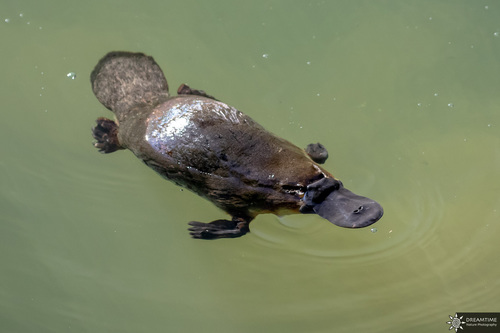
Platypus
The platypus, with its duck-bill and webbed feet, thrives in Australia's waterways. This egg-laying mammal fascinates with its venomous spurs and role in the ecosystem as both predator and prey, showcasing nature's marvels in its unique evolutionary path.
17 years
Lifespan
700.0 - 2400.0 g
Weight
Height: 39 - 60 cm
Size
Dark, Brown
Color
2 years
Age of Sexual Maturity
5 months
Age of Weaning
22 mph
Top Speed
Near Threatened
Conservation Status
Decreasing
Population Trend
Characteristics
The Ornithorhynchus anatinus, commonly known as the platypus, is a unique mammal native to eastern Australia, including Tasmania. It is semi-aquatic with a duck-bill, webbed feet, and a beaver-like tail. The platypus is known for laying eggs and being one of the few venomous mammals, with males possessing venomous spurs on their hind legs.
Distribution Range of the Platypus
The Ornithorhynchus anatinus, commonly known as the platypus, is native to eastern Australia, including Tasmania. It is primarily found in the eastern parts of Queensland, New South Wales, Victoria, and the island of Tasmania.
Platypus's Habitat
Environmental Conditions
The platypus inhabits freshwater environments such as rivers, streams, lakes, and ponds. It prefers areas with stable water levels and abundant aquatic vegetation. The climate of its habitat ranges from temperate to tropical, with variations depending on the specific region within its distribution.
Ecological Niche
The platypus is a semi-aquatic mammal that plays a unique role in its ecosystem. It is primarily nocturnal and feeds on aquatic invertebrates, small fish, and amphibians by foraging along the bottom of water bodies. The platypus is well-adapted to its aquatic niche, possessing webbed feet for swimming and a sensitive bill for detecting prey.
Copyright @ Nature Style Limited. All Rights Reserved.
 English
English